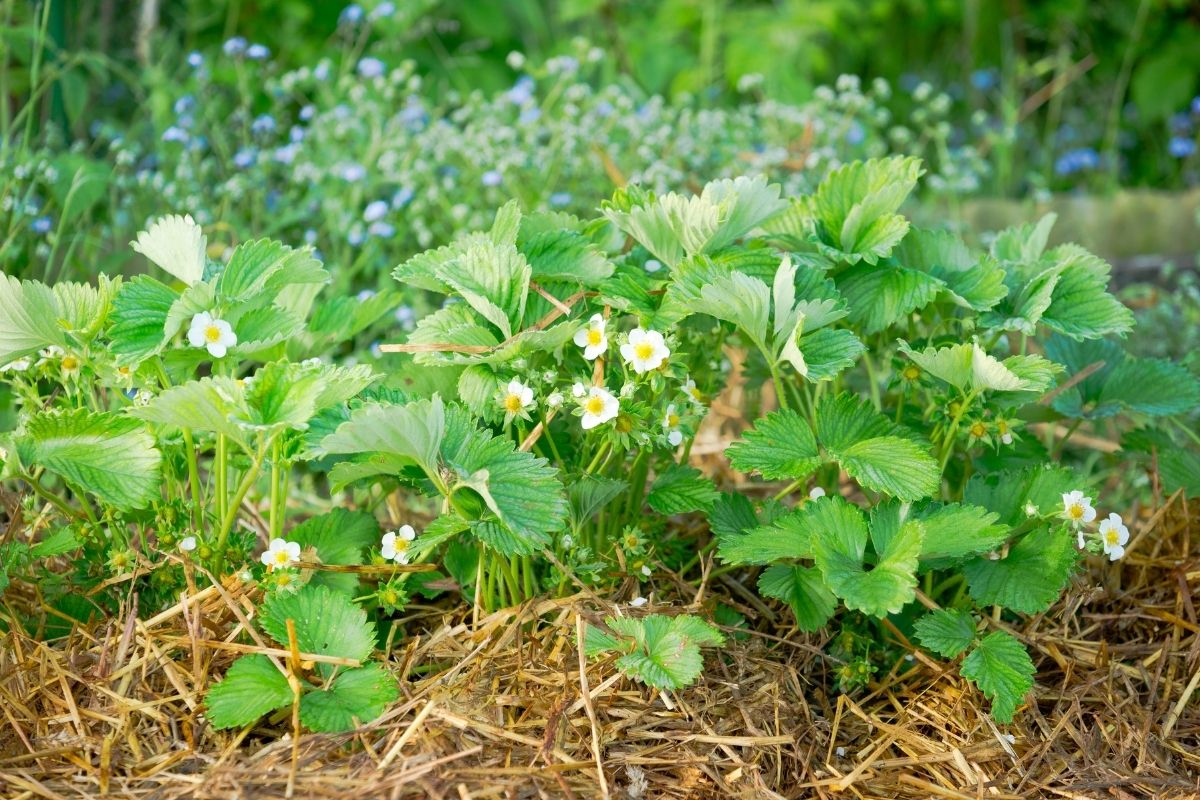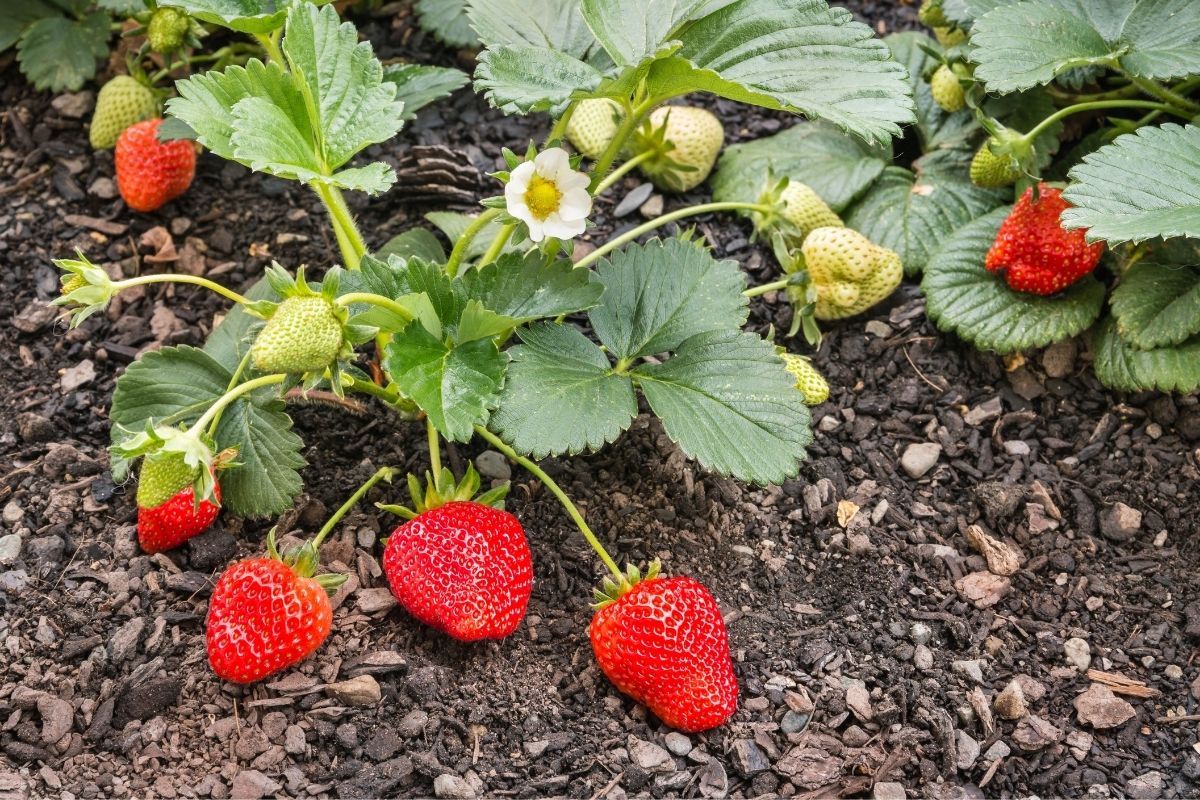Homegrown strawberries are a step above anything you'll find in the supermarkets. Picked at peak ripeness, they're sweeter, juicier and more aromatic than the commercial specimens harvested early to extend their shelf life. But growing strawberries from seed takes patience. It can be a month or more before the seeds germinate - with all the uncertainty that involves - and you definitely won't see any fruit until the second year.
Growing plants from strawberry runners avoids these difficulties, making it quick and easy to enjoy strawberries at their very best.
What Are Strawberry Runners?
Strawberry plants spread naturally by sending out side shoots known as runners, which can set down roots to form a new plant cloned from the parent. Over time, this spreading behaviour can populate a full strawberry patch from a single plant. However, runners can also be harvested and used to start off new strawberry plants that produce fruit the same year they're planted.
Runners are supplied as leafless, bare-rooted plants that are usually in a dormant winter state. At first glance they might not look too promising, consisting of a central stalky crown with a straggly mass of tentacle-like roots growing underneath, and sometimes a few dried old leaves to boot. Depending on the time of year, you may see some green shoots sprouting from the crown, but more often they'll appear dried out and lifeless. However, as long as you plant them soon after they arrive, they'll spring back into life and grow on to be productive plants.
Favourite Varieties
Strawberry runners are available in many varieties, bred for fruit size, flavour, weather tolerance and more. Some of the most popular ones include:
- Tioga: A traditional variety from California, growing vigorously in warmer climates and producing sweet, juicy fruit.
- Red Gauntlet: Another traditional strawberry, hailing from Scotland and delivering high yields in cooler climates.
- Adina: Developed specifically for Australian growers, producing large, juicy, aromatic fruits.
- Melba: Another Australian variety that produces exceptionally high-quality fruits, and is also tolerant of rain.
Preparing Your Spot
It's very important to choose and prepare your planting spot well in advance of receiving your runners, which don't have a long shelf life. If you can't plant them immediately they arrive, they'll keep in the fridge for a day or two - but don't hang about getting them into the ground.
Strawberries need full sun and can be grown either in the open soil or in containers including windowboxes and hanging baskets. In all cases, the soil needs to be rich and fertile, slightly acidic, and good at retaining moisture without waterlogging.
In a strawberry bed, soil conditions can be improved by digging in plenty of well-rotted organic matter before planting. In containers, choose a high-quality compost mix rather than using ordinary soil, and ensure there are sufficient drainage holes in the bottom of the pot or basket.
How to Plant the Runners
Once you receive your runners it's essential to plant them as soon as possible. First, soak them in water for an hour or so to rehydrate them, then clean them up by pruning off any dead leaves or roots to avoid fungal problems.
In an open bed, the runners should be spaced at a 30cm distance in rows 20-30cm apart. For containers, allow one runner per 30cm pot. Create a shallow mound in the soil and place the runner on top with the crown pointing upward. Fan out the roots, and cover them with soil to leave the base of the crown just at the surface. Water in well. Using a liquid fertiliser is optional but can help to give the plants a good start.
Ongoing Care and Harvesting
Keep the soil around the runners well watered until greenery starts to emerge. From then on, cultivate as for strawberries in general making sure they're regularly watered but not soaking, and use a liquid feed every two weeks from when the first flowers appear.
Once fruits start to form, underlay them with a mulch of dry straw to prevent rotting on the soil's surface, or less attractively, use plastic sheeting with drainage holes punched in. Picking the fruit as it ripens will encourage new flowers to extend the season, while removing any runners as they form will increase overall yields.
Common Pests and Diseases
Sweet, juicy strawberries are as attractive to pests as they are to humans. Slugs and snails can be a problem, although using a straw mulch will give some protection so long as it stays dry. Take your usual precautions such as beer traps, organic pellets, and nighttime garden patrols to remove the gastropods by hand.
Many other animals including birds, rodents and possums will also seek out the ripe fruit. If your fruit is being stolen or chewed fit some sturdy netting to save the harvest for your own enjoyment.
Keep an eye open for aphid infestations, which mainly harm strawberries by transmitting viruses rather than causing damage through feeding. And lastly, remove any dying leaves to prevent fungus from building up and spreading to the fruit.
If you avoid these problems and keep up with watering and feeding, you can expect at least three years of heavy cropping before productivity starts to fall off. New runners should then be planted to restore your bed's vigour.

.jpg)







